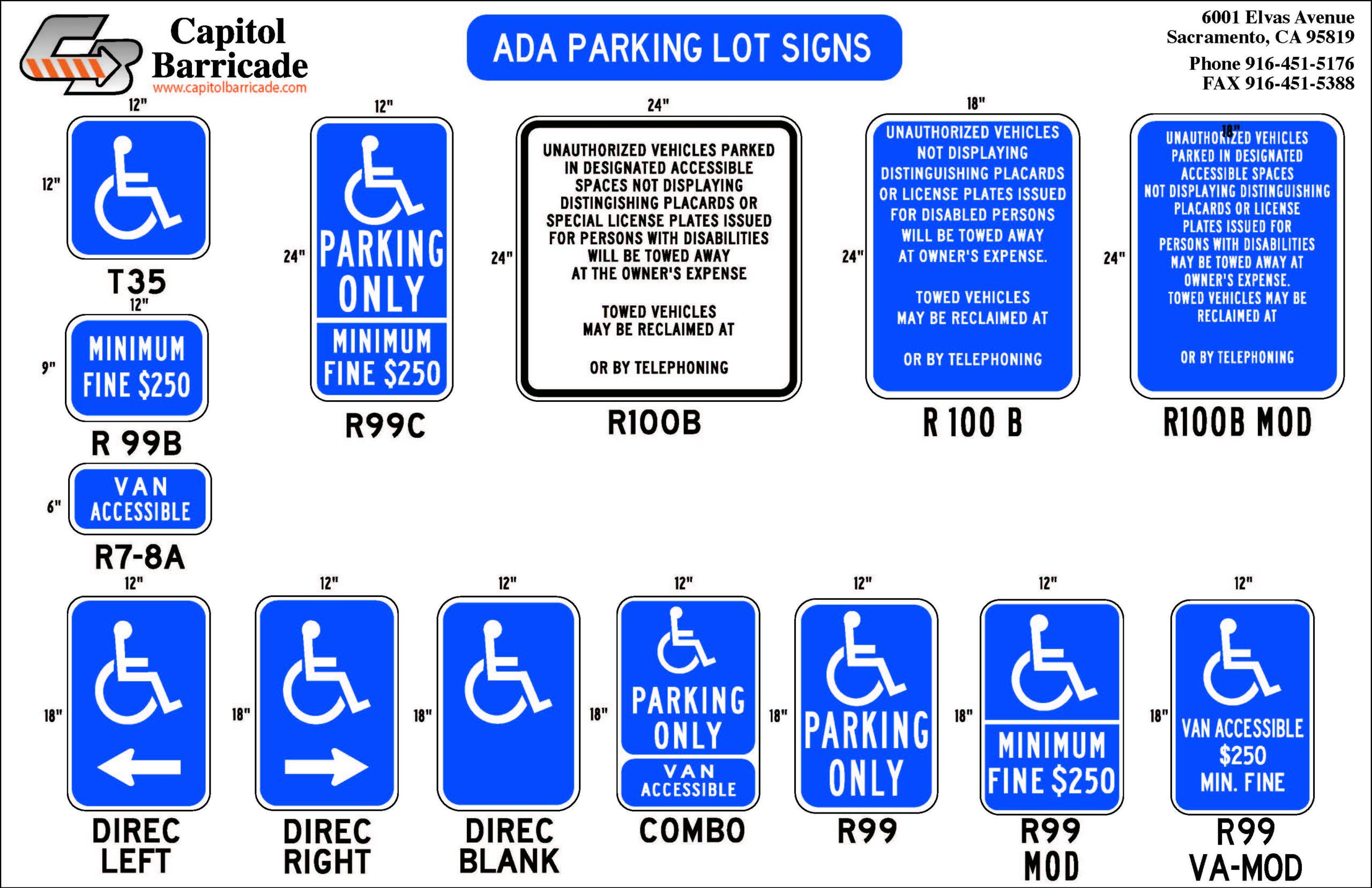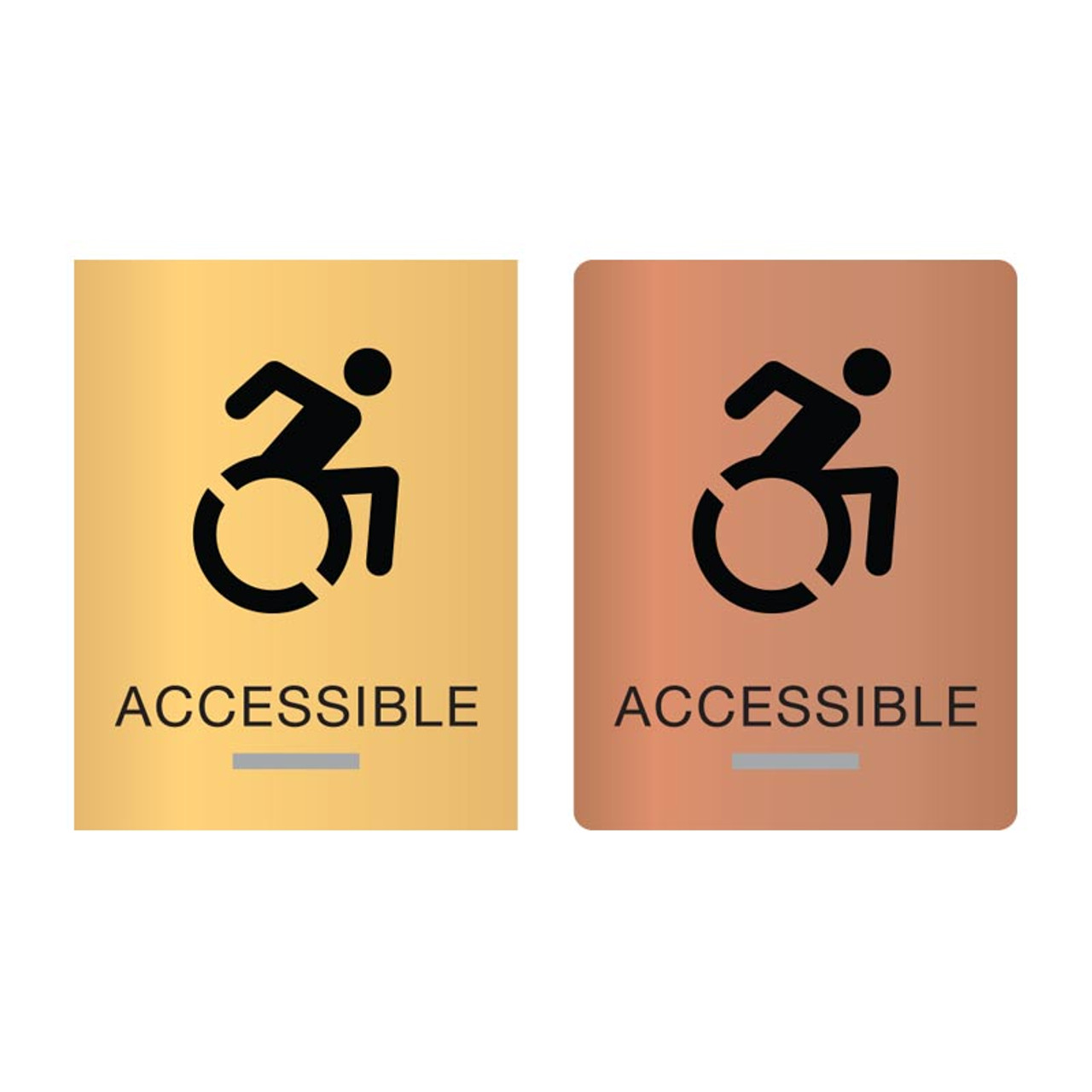Tailoring ADA Signs to Fulfill Your Details Requirements
Tailoring ADA Signs to Fulfill Your Details Requirements
Blog Article
Checking Out the Secret Features of ADA Signs for Improved Access
In the world of ease of access, ADA signs serve as silent yet powerful allies, making sure that areas are accessible and comprehensive for individuals with impairments. By integrating Braille and responsive elements, these indicators break obstacles for the aesthetically impaired, while high-contrast shade plans and readable typefaces provide to diverse aesthetic needs.
Importance of ADA Conformity
Making sure conformity with the Americans with Disabilities Act (ADA) is vital for cultivating inclusivity and equal gain access to in public rooms and workplaces. The ADA, passed in 1990, mandates that all public facilities, companies, and transportation services suit individuals with disabilities, ensuring they take pleasure in the same rights and possibilities as others. Conformity with ADA criteria not just fulfills lawful responsibilities however additionally boosts a company's track record by showing its dedication to variety and inclusivity.
One of the crucial facets of ADA conformity is the implementation of obtainable signage. ADA signs are created to ensure that people with specials needs can easily browse through spaces and structures. These indicators have to follow details guidelines pertaining to dimension, font, shade contrast, and positioning to assure visibility and readability for all. Correctly implemented ADA signage assists eliminate obstacles that individuals with impairments usually run into, thereby promoting their self-reliance and self-confidence (ADA Signs).
Additionally, adhering to ADA guidelines can reduce the risk of legal effects and potential fines. Organizations that stop working to abide with ADA guidelines might deal with legal actions or penalties, which can be both monetarily challenging and harmful to their public picture. Hence, ADA conformity is integral to promoting a fair setting for every person.
Braille and Tactile Aspects
The incorporation of Braille and responsive elements into ADA signs symbolizes the concepts of ease of access and inclusivity. These attributes are essential for individuals who are blind or aesthetically impaired, allowing them to browse public spaces with greater independence and self-confidence. Braille, a tactile writing system, is vital in offering created details in a format that can be conveniently perceived with touch. It is typically placed below the equivalent message on signs to guarantee that individuals can access the information without aesthetic support.
Responsive aspects prolong past Braille and consist of raised signs and characters. These components are developed to be discernible by touch, enabling people to identify room numbers, toilets, exits, and various other vital areas. The ADA sets certain standards regarding the dimension, spacing, and positioning of these tactile aspects to maximize readability and make certain uniformity throughout various environments.

High-Contrast Color Pattern
High-contrast shade plans play a pivotal role in enhancing the presence and readability of ADA signs for people with visual disabilities. These schemes are crucial as they maximize the difference in light reflectance in between text and history, ensuring that signs are conveniently discernible, even from a distance. The Americans with Disabilities Act (ADA) mandates using particular color contrasts to suit those with limited vision, making it a vital facet of compliance.
The efficiency of high-contrast colors hinges on their capacity to attract attention in various lighting conditions, consisting of poorly lit atmospheres and areas with glare. Generally, dark text on a light background or light message on a dark background is employed to accomplish ideal comparison. Black text on a yellow or white history offers a plain visual distinction that aids in quick acknowledgment and understanding.

Legible Fonts and Text Size
When taking into consideration the style of ADA signage, the choice of readable fonts and proper text dimension can not be overemphasized. The Americans with Disabilities Act (ADA) mandates that font styles should be not italic and sans-serif, oblique, manuscript, extremely decorative, or of uncommon form.
According to ADA standards, the minimum message this contact form height ought to be 5/8 inch, and it ought to enhance proportionally with checking out range. Consistency in text size contributes to a natural aesthetic read review experience, assisting people in browsing atmospheres effectively.
Furthermore, spacing between lines and letters is integral to clarity. Adequate spacing avoids personalities from appearing crowded, enhancing readability. By sticking to these standards, developers can considerably boost access, making certain that signage offers its designated objective for all people, no matter their aesthetic capacities.
Efficient Positioning Strategies
Strategic placement of ADA signage is necessary for making best use of ease of access and making sure conformity with legal standards. Correctly positioned indications direct individuals with specials needs effectively, assisting in navigation in public rooms. Trick considerations consist of visibility, distance, and elevation. ADA standards specify that indicators ought to be mounted at a height between 48 to 60 inches from the ground to ensure they are within the line of view for both standing and seated individuals. This basic height array is vital for inclusivity, enabling wheelchair individuals and people of differing heights to access information effortlessly.
Furthermore, indications have to be positioned beside the latch side of doors to enable simple recognition before access. This placement assists people situate rooms and spaces without obstruction. In cases where there is no door, signs should be located on the nearest adjacent wall surface. Consistency in indicator positioning throughout a center enhances predictability, reducing complication and improving general user experience.

Verdict
ADA signs play a crucial role in promoting access by incorporating attributes that deal with the requirements of individuals with impairments. Incorporating Braille and responsive important site aspects guarantees vital info comes to the visually damaged, while high-contrast color plans and understandable sans-serif fonts enhance visibility across different lighting problems. Effective placement techniques, such as appropriate installing heights and critical areas, additionally assist in navigation. These elements jointly cultivate an inclusive environment, emphasizing the importance of ADA compliance in ensuring equivalent accessibility for all.
In the realm of ease of access, ADA indicators offer as quiet yet effective allies, making certain that spaces are inclusive and navigable for individuals with impairments. The ADA, passed in 1990, mandates that all public facilities, employers, and transport solutions suit individuals with disabilities, guaranteeing they take pleasure in the very same civil liberties and possibilities as others. ADA Signs. ADA indications are created to make certain that individuals with specials needs can conveniently browse with buildings and areas. ADA standards stipulate that signs need to be mounted at an elevation in between 48 to 60 inches from the ground to ensure they are within the line of sight for both standing and seated individuals.ADA indications play a vital duty in advertising ease of access by incorporating attributes that deal with the demands of people with impairments
Report this page